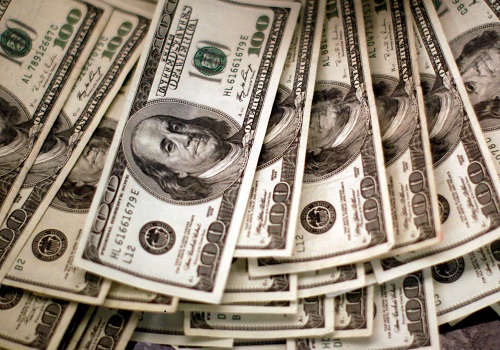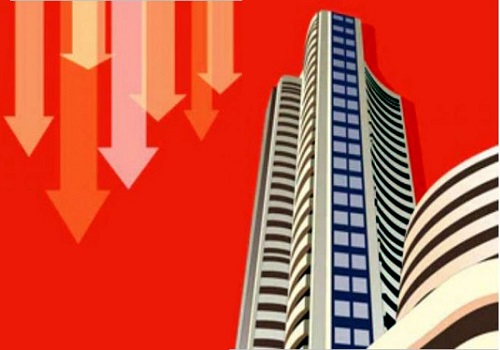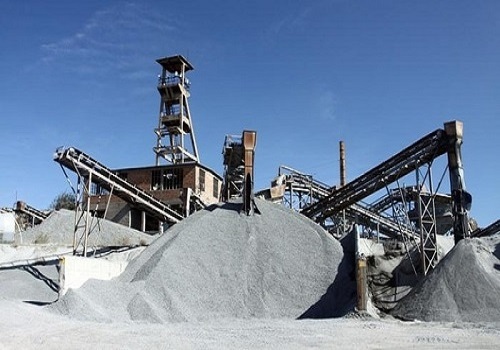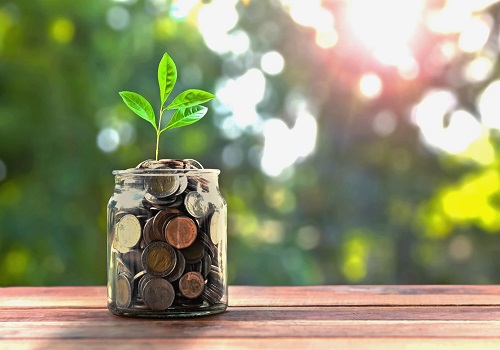Merchandise Trade : Oil shocks start to reflect By Emkay Global Financial

Follow us Now on Telegram ! Get daily 10 - 12 important updates on Business, Finance and Investment. Join our Telegram Channel
https://t.me/InvestmentGuruIndiacom
Download Telegram App before Joining the Channel
Oil shocks start to reflect
The trade deficit widened again to USD21.2bn, after briefly touching sub-USD18bn levels in Jan’22 - mainly due to the surge in oil and gold imports, even as non-oil non-gold (NONG) imports and exports slowed sequentially. Mar’22 will likely see the deficit widen further, led by higher crude and other (agri) commodity prices.
Although India’s hydrocarbon dependence on Russia and non-oil trade terms are limited, the indirect price channel could cripple trade dynamics. With a higher-than-expected trade deficit in February and March, FY22E CAD/GDP could even shoot above 2%.
As we assess the macro impact of higher energy prices, we recognize that the uncertainty is high and the situation is still in flux. CAD/GDP could shoot up by 0.5% with each USD10/bbl increase in crude prices. This takes into consideration both the negative (through higher net oil imports) and positive (through higher remittances) impacts.
With oil sustaining above USD100/bbl, CAD/GDP ratio may comfortably cross 2.5%+ of GDP in FY23E. CYTD’22, the INR has been the worst-performing EM Asian FX. A higher twin deficit, global/domestic headwinds and possible change in global risk appetite could keep the pressure on INR intact.
Deficit back to USD20bn+ levels as imports (led by oil) outdo exports
As per the prelim estimates, the Feb’22 merchandise trade deficit widened to USD21.2 bn vs. a deficit of USD17.4bn in Jan’22. Momentum picked up in imports sequentially while exports weakened, leading to a sharper widening (21.6% MoM) in trade deficit. On an annualized basis, exports grew by 22.4% (25% in Jan’22), while imports grew by 35% (24% in Jan’22). Against Feb’20, exports and imports grew by 22% and 45%, respectively, implying that India’s trade is comfortably above the pre-pandemic levels. For FYTD22, exports and imports continued to clock strong growth of 45% (USD371.9bn) and 60% (USD547.8bn) YoY, respectively.
Export momentum weakens; engineering goods consistent performer
Exports grew by 22.4% to USD33.8bn in Feb’22 from 25.3% in Jan’22. On a sequential basis, exports continue to lose momentum, although at a lower rate (-2% vs. -8.8% prior). Oil exports, which constitute 12% of total exports, were up 66% (-1% MoM). Non-oil exports grew 18% (19.4% in Jan’22) to USD29.7bn, but declined sequentially by 2%. Engineering exports, the highest contributor to exports (27%), grew 31.3% and have been consistently registering 40%+ growth on an average in the last 10 months. Meanwhile, pharma exports continued the decline trend in Feb’22 (-3.2% vs. -1.1% prior). On a 2-year CAGR basis, engineering goods led the show (13%), followed by organic chemicals (9.5%) and petroleum products (9.3%).
Oil imports spike in Feb’22 while NONG weaken
Imports recorded strong gains in Feb’22 (35% vs. 24% in Jan’22) and continued to clock above USD50bn for the sixth-straight month (USD55bn). Sequentially, imports gained 5.9%, partly reversing the negative growth (- 12.7% MoM) seen in Jan’22. Imports are now 45% above their pre-pandemic levels (20.5% 2-yr CAGR), indicating the extent of normalization. Growth in oil imports was sharp (67% YoY vs. 27% earlier) and the sequential pick-up remained strong at 25.8%, which almost reversed previous months’ decline (-26%), led by price effect. Gold’s sequential gains were sharp at 95% (-49% prior) even as it contracted on an annualized basis. Electronic goods imports have been healthy, consistently growing by 33% (2-yr CAGR), but weakened sequentially (-18%). NONG imports have seen steady growth at 34% YoY (19.4% 2-yr CAGR), but weakened sequentially (-6.1%). Annualized growth of NONG was led by electronic goods (29%) and machinery (13.5%)
FY23 CAD/GDP may comfortably cross 2.5%+ if oil sustains above USD100/bbl
With import growth exceeding export growth and worsening losses in oil-led terms of trade (and higher commodities in general), FY22 CAD-to-GDP will likely cross 2% (+0.9% in FY21), with a soaring Feb-Mar’22 oil import bill. The ongoing Russia-Ukraine crisis should impact global energy/agri prices even as India’s hydrocarbon dependence on Russia is limited. However, more than 80% energy import dependence cripples India’s macro picture. On direct trade exposures, Russia forms a small portion of India’s exports (0.8% of total exports) and imports (1.6% of total imports). Commodity-wise, project goods and fertilizers lead India’s import pack (with 24% and 8% total imports in those categories sourced from Russia), while on the exports front, 2.4% of drugs/pharma and 2.3% electronic goods are routed to Russia (see Exhibits 7 and 8). As we assess the macro impact of higher energy prices, we recognize that the uncertainty is high and the situation is still in flux. CAD/GDP could shoot up by 0.5% with each $10/bbl increase in crude prices. This takes into consideration both the negative (through higher net oil imports) and positive (through higher remittances) impacts. With oil sustaining above USD100/bbl, the CAD/GDP ratio may comfortably cross 2.5%+ of GDP in FY23E. A higher twin deficit, global risks and a change in risk appetite could keep the pressure on INR intact.
To Read Complete Report & Disclaimer Click Here
For More Emkay Global Financial Services Ltd Disclaimer http://www.emkayglobal.com/Uploads/disclaimer.pdf & SEBI Registration number is INH000000354
Above views are of the author and not of the website kindly read disclaimer










Tag News

Monthly Debt Market Update, September 2023: CareEdge Ratings












